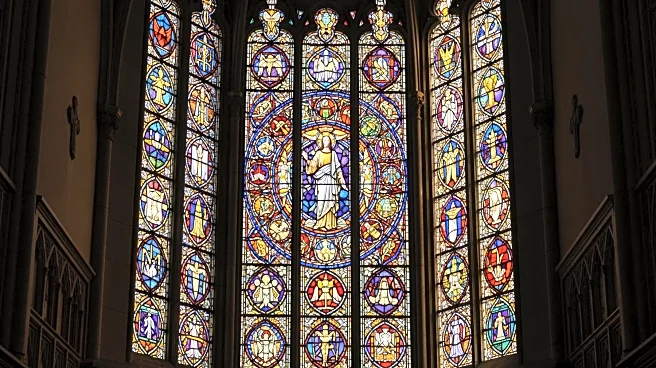What's Happening?
On November 4, 2025, the Dicastery for the Doctrine of the Faith released a doctrinal note titled 'Mater Populi Fidelis' addressing the use of certain Marian titles, specifically Co-redemptrix and Mediatrix.
The note aims to clarify the Church's doctrine regarding Mary's role in salvation without altering the underlying theology. The document emphasizes that while Mary plays a unique role in Christ's saving work, the titles Co-redemptrix and Mediatrix require extensive explanation to avoid confusion about Christ's exclusive role in salvation. The note suggests that these titles may obscure the harmony of Christian truths and proposes caution in their use.
Why It's Important?
The clarification of Marian titles is significant for maintaining doctrinal clarity within the Catholic Church. By addressing potential misunderstandings, the Church aims to preserve the integrity of its teachings and prevent misinterpretations that could lead to doctrinal confusion among believers. This move may impact ecumenical dialogues, particularly with Protestant communities, by addressing concerns over perceived changes in doctrine. The decision reflects the Church's commitment to ensuring that its teachings are accessible and accurately understood by the faithful.
What's Next?
The Church may continue to engage in discussions and provide further clarifications on Marian doctrines to ensure consistent understanding among its followers. The doctrinal note could lead to revisions in educational materials and catechesis to align with the clarified stance. Additionally, the Church might explore new ways to communicate the significance of Mary's role in salvation without relying on titles that require extensive explanation.
Beyond the Headlines
The decision to address Marian titles highlights the Church's ongoing efforts to balance tradition with contemporary understanding. It underscores the importance of language in theological discourse and the potential for titles to influence perceptions of doctrine. This development may encourage further examination of how religious language shapes faith and understanding within the Church.













